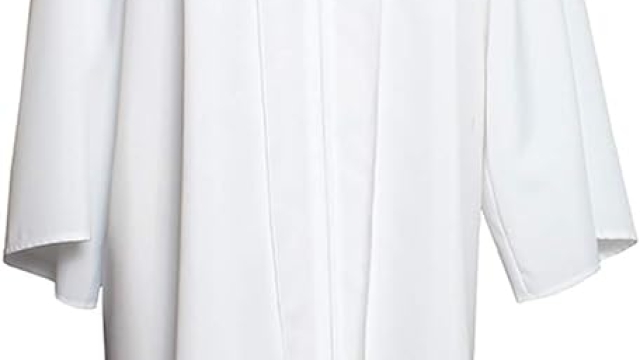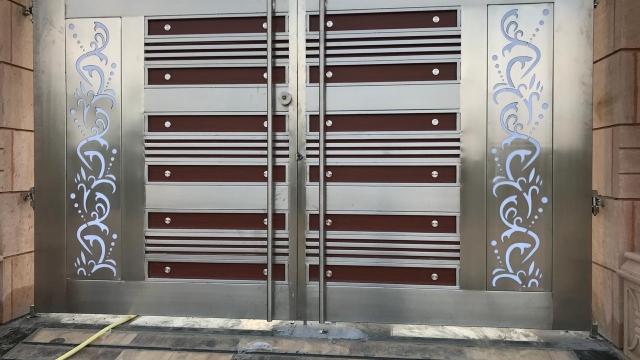
The Harmonious Elegance of Choir Robes

Choir robes have long been a symbol of unity, talent, and devotion within the realm of choral music. These elegant garments not only serve as a distinction between performers and audience but also hold a deeper significance within the art form itself. Embodied in their fabric is a sense of harmony and tradition that has endured throughout the ages, connecting past and present in a beautiful continuum.
As performers don these robes, a transformation takes place. The humble individuals unite, forming a collective voice that reverberates through the halls, carrying with it a sense of purpose and dedication. The choir robes, with their flowing lines and rich colors, amplify this sense of belonging, enveloping each singer in a visual symphony of elegance and grace. Together, they radiate a harmonious energy that captivates both eye and ear, inviting the audience to partake in the musical journey that is about to unfold.
Beyond their aesthetic appeal, choir robes also play a practical role in the choral experience. They provide a sense of uniformity, allowing the focus to be solely on the music and the artists who bring it to life. Through their simple yet dignified design, these robes embody a sense of equality among performers, creating an environment that fosters collaboration and cooperation. In wearing these sacred garments, choirs embody the very essence of unity, not only in their musical expression but also in their visual presentation.
In their humble simplicity and graceful allure, choir robes embody the very essence of choral music itself. Through their harmonious elegance, they serve as a visual representation of the collective voice that emerges when separate voices join in unison. As the world of choral music continues to evolve, these robes remain an enduring symbol of tradition, camaraderie, and the power of harmonious unity.
History of Choir Robes
Choir robes have a rich history that dates back several centuries. These iconic garments have played an integral role in the choral tradition, adding a touch of elegance and unity to performances. Let’s delve into the intriguing origin and evolution of choir robes.
During the medieval period, religious chants and hymns were an integral part of church services. As early as the 9th century, clerics and priests began wearing vestments to distinguish themselves during these sacred musical performances. These early robes were often simple and plain, serving primarily as a symbol of reverence and spiritual authority.
It wasn’t until the Renaissance period that choir robes started to take on a more elaborate and decorative form. The influence of the arts and the desire to create a visually appealing aesthetic led to the introduction of vibrant colors and intricate designs. Choir members began wearing robes adorned with embroidered motifs and patterns, reflecting the grandeur of the music they were creating.
As time went on, choir robes also became a practical choice. They served a practical purpose by ensuring uniformity among the singers, as their individual clothing choices could otherwise distract from the overall performance. Moreover, robes allowed choir members to focus solely on their musical expression without worrying about their attire.
In conclusion, the history of choir robes is a testament to their enduring significance in the world of choral music. From their humble beginnings as simple vestments to their evolution into the dazzling and distinctive garments we see today, choir robes have become an essential part of the harmonious journey taken by singing ensembles worldwide.
Symbolism and Significance of Choir Robes
Choir robes hold a deeper symbolism and significance beyond their aesthetic appeal. These majestic garments, worn by singers during choral performances, play a crucial role in creating a harmonious and unified atmosphere within a choir.
First and foremost, choir robes symbolize equality among members. When everyone dons these robes, individual differences in clothing style, color, or quality become irrelevant. By eliminating such distractions, choir members are able to focus solely on their collective purpose: creating beautiful music together.
Additionally, choir robes represent tradition and history. Over the centuries, these distinct garments have become synonymous with choral performances. From church choirs to academic institutions, the tradition of wearing choir robes has been passed down through generations, linking present-day performers to the rich legacy of those who came before them.
Furthermore, choir robes provide a sense of identity and belonging. By wearing the same robe as their fellow singers, choir members become part of a larger community and experience a collective spirit. This shared identity promotes a sense of camaraderie and unity, strengthening the bond between singers and creating a sense of belonging to something greater than themselves.
In conclusion, the symbolism and significance of choir robes extend far beyond their visual impact. These garments embody equality, tradition, and a shared identity within the choir. By wearing choir robes, singers not only enhance the visual appeal of their performances but also create a harmonious and elegant atmosphere that resonates with the power of collective voices.
Variety and Customization of Choir Robes
Choir robes offer a wide range of options when it comes to variety and customization. These elegant garments not only serve as a unifying symbol for choir members but also allow for personal touches that reflect the unique identity of each choir.
The first aspect to consider is the assortment of colors available for choir robes. Choirs can choose from a rich palette, ranging from deep and regal hues to vibrant and uplifting shades. The color selection allows choirs to align their robes with the ambiance and theme of their performances, creating a visually captivating experience for both the performers and the audience.
Another customization option for choir robes is the incorporation of specialized embroidery. From intricate patterns to personalized initials or logos, embroidery adds a touch of sophistication and exclusivity to the ensemble. These carefully crafted designs not only enhance the beauty of the robes but also enable choirs to showcase their individuality and artistic flair.
Additionally, the style and cut of choir robes can be tailored to suit the preferences of each choir. Some opt for classic and traditional designs, while others prefer more contemporary and modern silhouettes. By choosing a style that resonates with their musical genre or aesthetic, choirs can further enhance the visual harmony of their performances.
Choir Robes For Kids
In conclusion, the variety and customization options available for choir robes allow choirs to create a harmonious and elegant visual presentation. The colors, embroidery, and style choices enable choirs to highlight their unique identity while maintaining a cohesive ensemble. With these customizable elements, choir robes add an extra layer of beauty and elegance to any choir performance.



